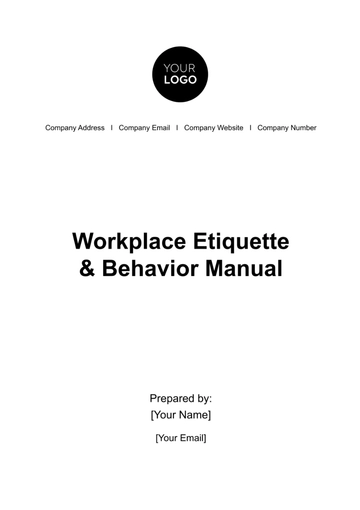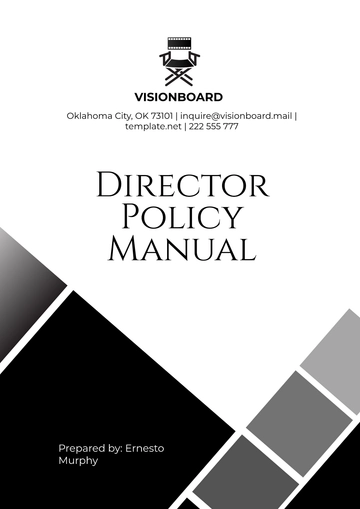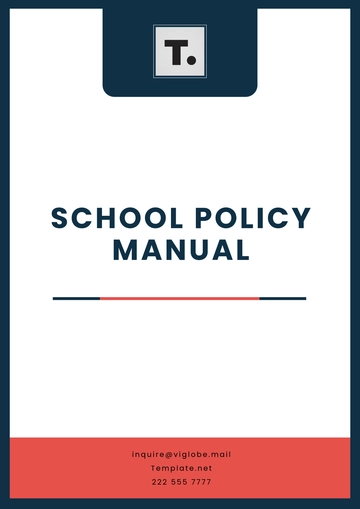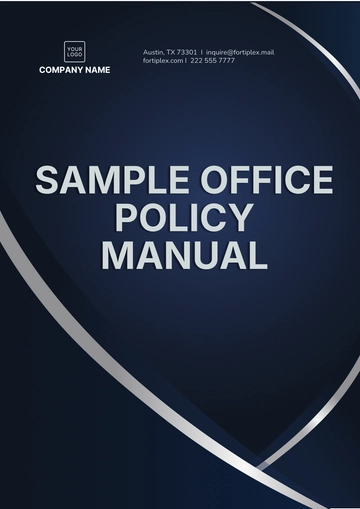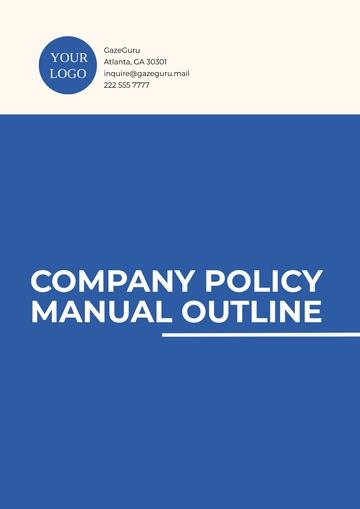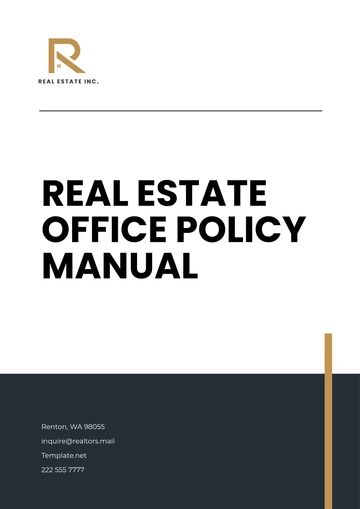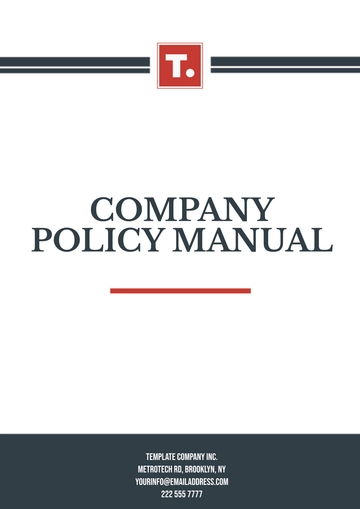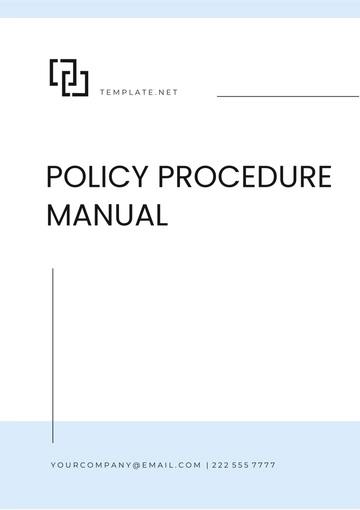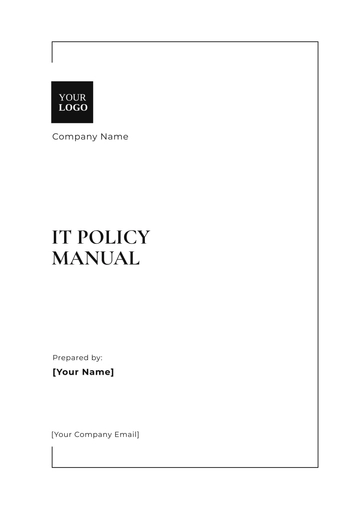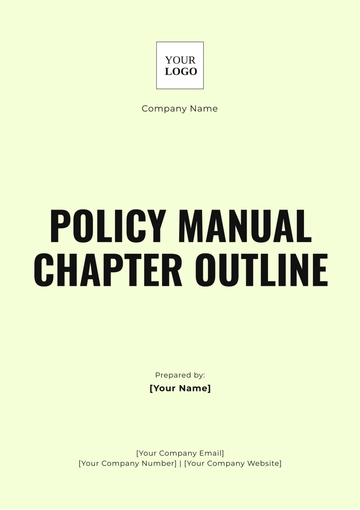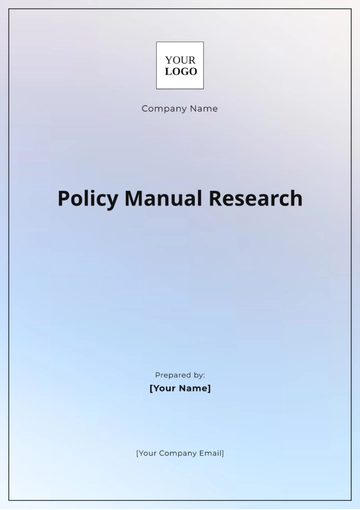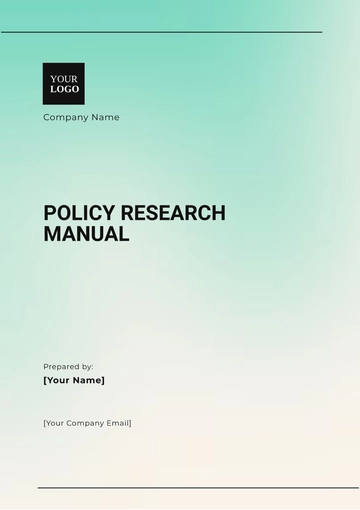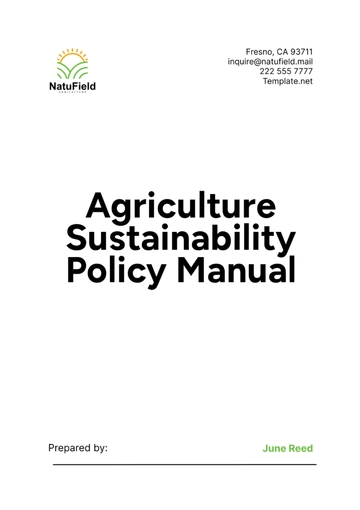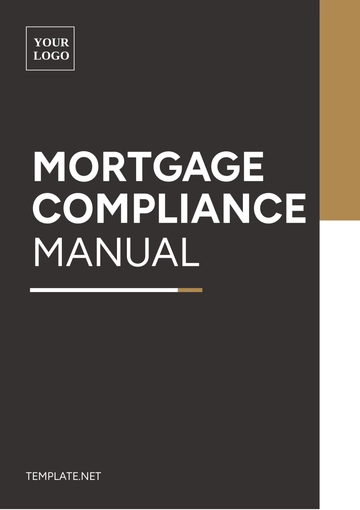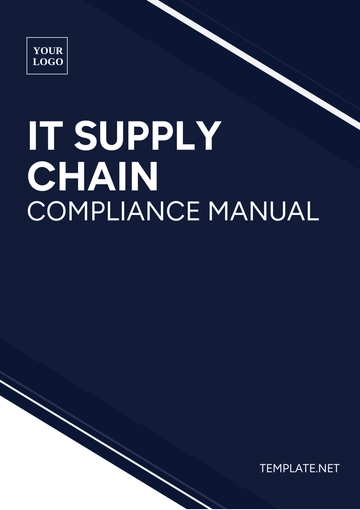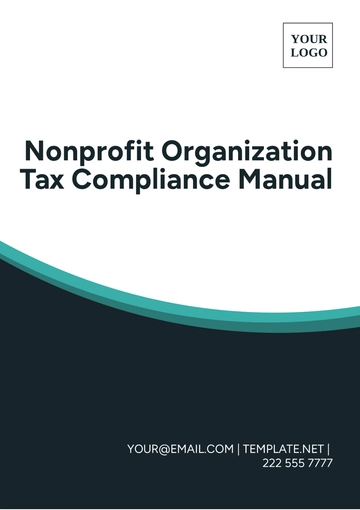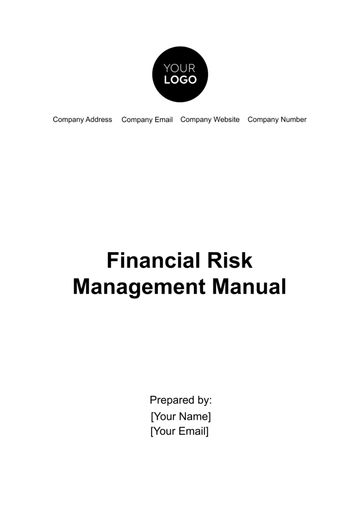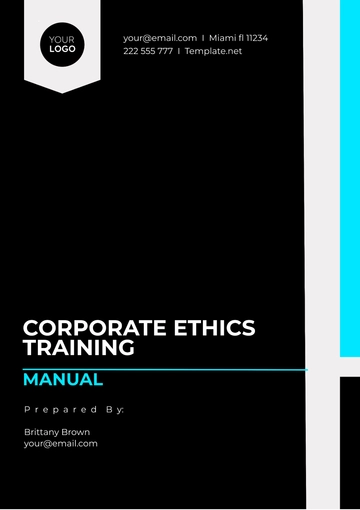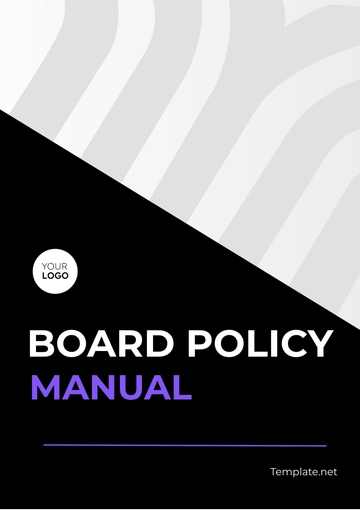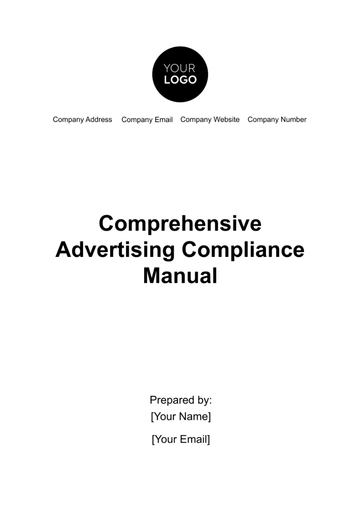Free Compliance & Regulatory Training Manual HR
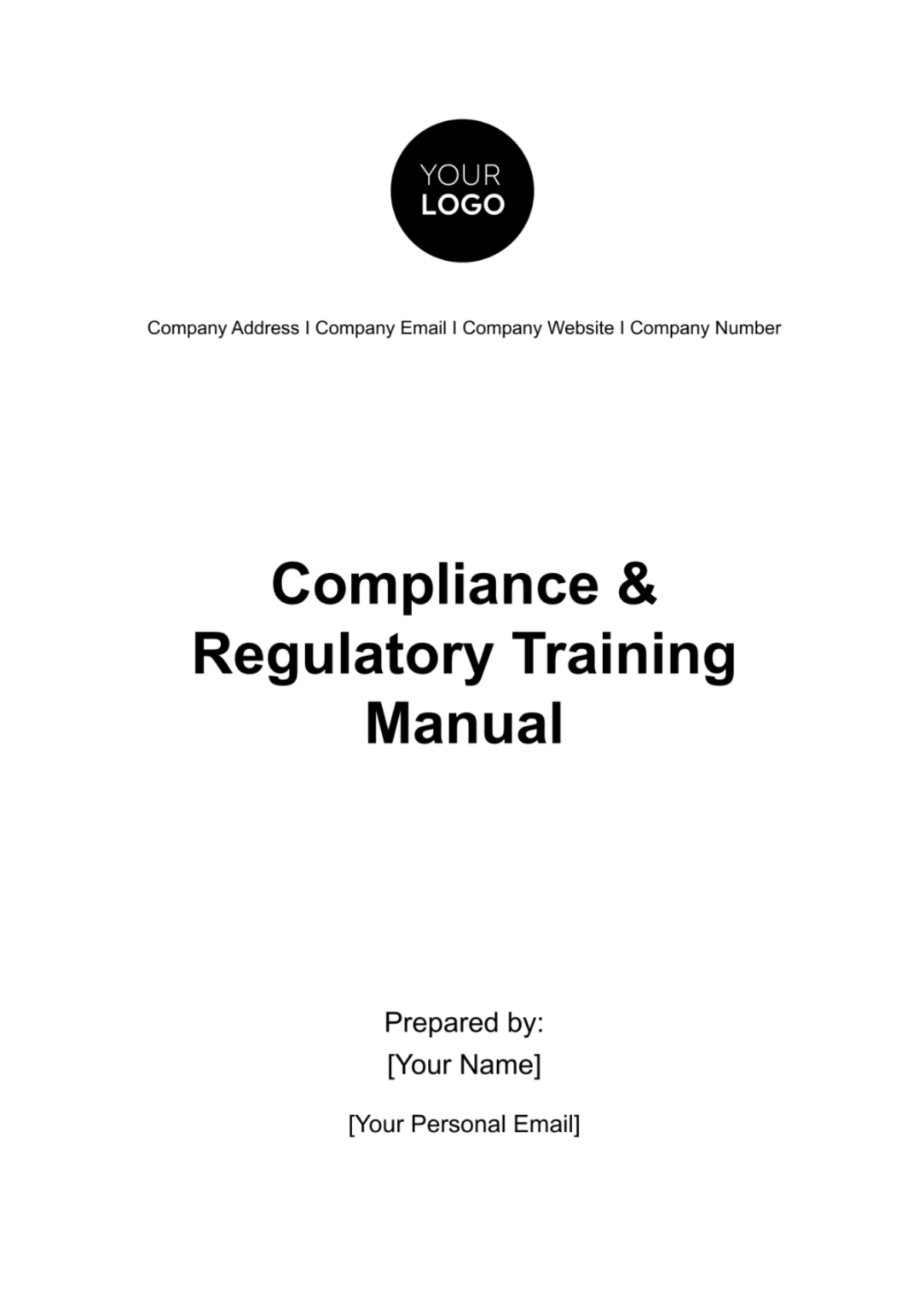
Section 1: Introduction to Compliance and Regulatory Training
1.1 Purpose of this Manual
This Compliance and Regulatory Training Manual serves as a foundational resource within [Your Company Name], aimed at fostering a culture of compliance and ensuring that all employees, from the newest recruits to seasoned executives, understand the significance of compliance with laws and regulations. It empowers individuals to take responsibility for their role in maintaining compliance and equips them with the knowledge needed to make informed decisions.
1.2 Importance of Compliance and Regulatory Training
Compliance with laws and regulations is not merely a legal obligation but a fundamental element of our company's identity and success. Active participation in compliance training ensures that employees recognize that compliance is not just a matter of ticking boxes but a commitment to ethical behavior and responsible corporate citizenship. Compliance training empowers employees to recognize potential compliance risks, make ethical decisions, and protect our organization's reputation.
1.3 Target Audience
This manual is intended to benefit all individuals associated with our organization, irrespective of their job titles or positions. We have tailored the manual to meet the distinct needs of employees, managers, supervisors, and compliance officers. By addressing the unique roles and responsibilities of each group, this manual ensures that everyone is well-prepared to contribute to our compliance efforts actively.
Section 2: Understanding Compliance and Regulations
2.1 Definition of Compliance
Compliance, as defined here, is the ongoing commitment of all employees to follow not only the letter but also the spirit of laws, regulations, and company policies. It involves proactively adhering to these standards and reporting any potential deviations promptly. In essence, compliance is an active and dynamic process that requires continuous vigilance.
2.2 Types of Regulations
Understanding the various types of regulations, such as industry-specific, environmental, labor, and financial regulations, is crucial for employees to recognize the breadth of compliance requirements that affect our operations. Active awareness of these regulations allows employees to make informed decisions and seek guidance when navigating complex compliance issues.
2.3 Key Regulatory Bodies
Compliance extends beyond knowing the regulations; it involves identifying the regulatory bodies responsible for enforcing these rules. This section highlights the most relevant regulatory authorities and emphasizes the importance of staying informed about their guidelines and expectations. Active engagement with regulatory bodies can help us anticipate changes and proactively address compliance challenges.
2.4 Organizational Consequences of Non-Compliance
Non-compliance can have significant consequences for our organization. Active understanding of these consequences, including legal penalties, financial losses, and damage to our reputation, is essential for motivating employees to prioritize compliance. It underscores that non-compliance is not just an individual issue but a potential threat to the entire organization.
Section 3: Legal Framework
3.1 Overview of Relevant Laws
An active overview of the laws that directly impact the company's business operations should be provided. By actively understanding these laws, employees can better appreciate the legal context in which they operate and make informed decisions that align with our organization's commitment to compliance.
3.2 Federal Regulations
Active knowledge of federal regulations is essential, as they form the foundation of our legal obligations. By actively staying informed about these regulations, employees can ensure that their daily activities align with federal compliance requirements, thereby mitigating potential risks.
3.3 State and Local Regulations
Employees in various locations must actively recognize the significance of state and local regulations. These regulations can vary widely, and active compliance requires understanding and adhering to the specific requirements applicable to each location.
3.4 International Regulations
For our organization's international operations, actively complying with international regulations is critical. Employees working across borders must be aware of and adhere to international laws that govern our activities. Active engagement with international regulations ensures that our organization operates responsibly and ethically on a global scale.
Section 4: Compliance Responsibilities
4.1 Leadership Commitment
Leadership sets the tone for compliance culture and bears ultimate responsibility for fostering an environment where ethical conduct is prioritized. Executives and senior management must lead by example, demonstrating unwavering commitment to compliance principles and providing resources to support compliance initiatives.
4.2 Departmental Responsibilities
Each department within our organization plays a vital role in maintaining compliance standards relevant to its functions. From finance to human resources to operations, every department must understand and adhere to regulatory requirements applicable to its operations. Departmental heads are responsible for ensuring compliance within their respective areas and implementing controls to mitigate compliance risks.
4.3 Employee Accountability
Every employee shares responsibility for upholding compliance standards and contributing to a culture of integrity. Regardless of their role or level within the organization, employees are expected to comply with applicable laws, regulations, and internal policies. By promoting accountability and ethical behavior at all levels, we cultivate a workforce that actively supports our compliance efforts.
4.4 Cross-Functional Collaboration
Achieving compliance requires collaboration across departments and functions. Cross-functional teams facilitate the exchange of information, identification of compliance risks, and development of integrated solutions. By fostering collaboration, we leverage the collective expertise of our workforce to address complex compliance challenges effectively.
Section 5: Reporting and Whistleblower Policies
5.1 Reporting Procedures
Understand the process for reporting compliance concerns or suspected violations.
Identify the designated reporting channels, including direct supervisors, HR, compliance officers, or anonymous hotlines.
Clarify the steps involved in documenting and escalating reported incidents for investigation.
5.2 Whistleblower Protection
Outline the protections afforded to whistleblowers under company policies and relevant laws.
Emphasize the confidentiality of whistleblower reports and the prohibition of retaliation against individuals who report in good faith.
Provide assurances that whistleblowers will be treated fairly and without prejudice throughout the reporting and investigation process.
5.3 Investigation Protocols
Define the procedures for conducting thorough and impartial investigations into reported incidents.
Assign responsibility for investigating complaints to qualified personnel or investigative teams.
Ensure compliance with legal requirements and internal protocols throughout the investigation process.
5.4 Resolution and Follow-Up
Detail the steps taken to address substantiated reports of non-compliance or misconduct.
Discuss potential disciplinary actions or corrective measures based on the findings of investigations.
Establish mechanisms for monitoring and following up on remedial actions to prevent recurrence.
5.5 Communication and Transparency
Communicate regularly with employees about the status of reported incidents and the outcomes of investigations.
Emphasize the importance of transparency in addressing compliance concerns and maintaining trust within the organization.
Provide avenues for employees to seek clarification or additional support related to reporting and whistleblower policies.
Section 6: Training and Education
6.1 Training Topics
Training Topic | Description |
|---|---|
Compliance Fundamentals | An overview of basic compliance principles, including legal obligations, ethical standards, and the importance of regulatory adherence. |
Industry-Specific Regulations | In-depth exploration of regulations relevant to our industry sector, such as HIPAA in healthcare or PCI DSS in financial services. |
Data Privacy and Security | Training on handling sensitive information, protecting data privacy, and complying with regulations like GDPR or CCPA. |
Anti-Corruption and Bribery | Understanding laws such as the Foreign Corrupt Practices Act (FCPA) and anti-bribery policies to prevent corrupt practices in business dealings. |
Whistleblower Protection | Education on whistleblower policies and protections, encouraging employees to report concerns without fear of retaliation. |
Ethical Decision-Making | Workshops and case studies to develop ethical decision-making skills, emphasizing integrity, transparency, and accountability in all actions. |
Regulatory Updates and Compliance Trends | Regular updates on changes to regulations, industry trends, and emerging compliance issues to ensure employees stay informed and up-to-date. |
Compliance in Vendor Relationships | Training on managing compliance risks associated with third-party vendors, including due diligence, contract management, and monitoring obligations. |
Cybersecurity Awareness | Awareness programs to educate employees on cybersecurity threats, best practices for safeguarding data, and compliance with cybersecurity regulations. |
Diversity, Equity, and Inclusion (DEI) | Integration of DEI principles into compliance training to promote fairness, respect, and equal opportunity in the workplace, aligning with legal requirements and societal expectations. |
Section 7: Record-keeping and Documentation
7.1 Maintaining Compliance Records
Active record-keeping is essential for documenting compliance efforts and actions taken. This subsection actively discusses the importance of maintaining accurate records of compliance-related activities.
7.2 Documentation Best Practices
Employees must actively understand the best practices for documenting compliance-related information. This section actively guides how to create, organize, and store compliance documentation effectively.
7.3 Document Retention and Destruction
Active compliance includes knowing how long to retain documents and when to securely destroy them. This subsection actively outlines our organization's document retention and destruction policies to ensure that employees actively comply with these guidelines.
Section 8: Auditing and Monitoring
8.1 Internal Audits
Internal audits are conducted periodically to assess compliance with established policies, procedures, and regulatory requirements. Trained auditors review documentation, conduct interviews, and examine processes to identify areas of non-compliance or opportunities for improvement. Internal audit findings provide valuable insights into our compliance posture and help identify corrective actions to address deficiencies.
8.2 External Audits
External audits may be conducted by regulatory agencies, industry bodies, or third-party auditors to evaluate our compliance with external standards and regulations. These audits are typically more formal and may involve a comprehensive review of our operations, documentation, and controls. Cooperation with external auditors is essential to demonstrate our commitment to transparency and compliance.
8.3 Continuous Monitoring
Continuous monitoring involves ongoing surveillance of key compliance indicators and metrics to detect potential issues in real-time. Automated monitoring tools, regular data analysis, and exception reporting enable us to identify deviations from established norms promptly. By proactively monitoring compliance activities, we can address emerging risks and prevent compliance failures before they occur.
Section 9: Consequences of Non-Compliance
The repercussions of non-compliance extend far beyond financial and legal penalties; they can irreversibly tarnish our reputation and erode stakeholder trust. Consider the aftermath of a data breach due to non-compliance with data protection regulations. Apart from hefty fines, the damage to our brand's reputation and customer trust could be catastrophic, leading to loss of market share and investor confidence.
Moreover, the legal ramifications of non-compliance may involve litigation, regulatory investigations, and consent decrees, draining resources and diverting focus from core business activities. The cost of defending against lawsuits and regulatory enforcement actions can escalate quickly, impacting profitability and shareholder value.
Beyond the financial and legal implications, non-compliance undermines employee morale and organizational culture. A culture of impunity fosters disengagement, cynicism, and a disregard for ethical standards among employees. This toxic environment not only hampers productivity and innovation but also makes attracting and retaining top talent challenging.
Furthermore, non-compliance with regulatory requirements can lead to operational disruptions, supply chain issues, and contractual breaches. Failure to meet contractual obligations due to compliance failures can result in contract terminations, loss of business relationships, and significant revenue loss.
Section 10: Continuous Improvement
10.1 Evaluating Training Effectiveness
Actively assessing the effectiveness of compliance training is essential to ensure that it meets its objectives. This subsection actively explains the methods used to measure training effectiveness and actively encourages employees to provide feedback for ongoing improvement.
10.2 Adapting to Changing Regulations
Actively staying updated with evolving regulations and adapting to them is crucial for maintaining compliance. This section actively highlights the importance of proactively monitoring regulatory changes and actively adjusting our practices to remain in compliance.
10.3 Promoting a Culture of Compliance
Actively fostering a culture of compliance is an ongoing effort that requires the active participation of every employee. This subsection actively provides strategies and active steps that employees can take to actively promote and reinforce a culture of compliance within our organization, thereby ensuring its long-term success and sustainability.
- 100% Customizable, free editor
- Access 1 Million+ Templates, photo’s & graphics
- Download or share as a template
- Click and replace photos, graphics, text, backgrounds
- Resize, crop, AI write & more
- Access advanced editor
Streamline your HR compliance training with Template.net's Compliance & Regulatory Training Manual HR template. Easily editable and fully customizable, it's tailored to meet your regulatory needs. Access and edit it conveniently through our online AI Editor Tool, ensuring effortless updates and compliance alignment. Simplify your training process while staying up-to-date with regulatory requirements today!


